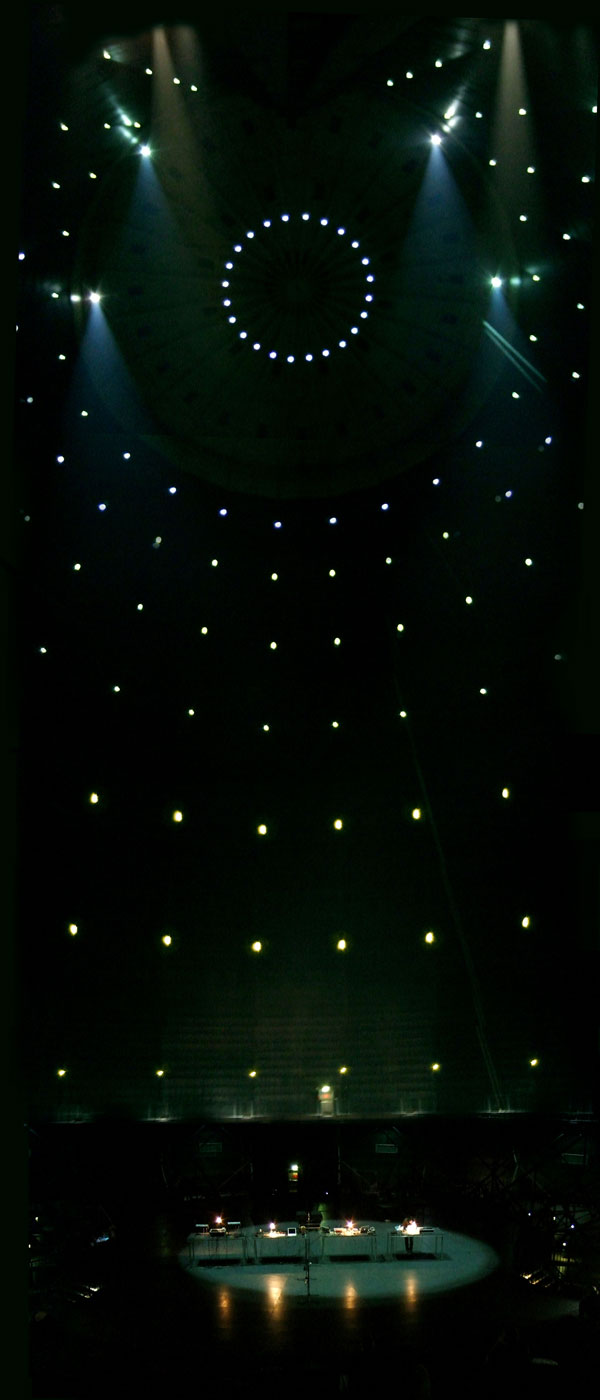Oberhausen Requiem

Hiroki Nishino, Oberhausen Requiem, electronic sound, the Oberhausen Gasometer and audience with cyalume pen lights, 117.5 m high, 67.6 m diameter (the Gasometer), 2007. (© Hiroki Nishino. Photo © Johannes Gramm.)
Oberhausen Requiem is a site-specific electroacoustic live performance designed and implemented for the huge Gasometer in Oberhausen, Germany, and captured on video. The original live performance took place multiple times on 8 and 22 September 2007. The Gasometer is not functional as industrial space today but is still one of the important symbols of the city and is sometimes described as an "industrial cathedral." The recorded acoustic aspect of the piece consists of one track, largely due to the fact that the extraordinarily long and intense reverberations inside the Gasometer make it impossible to realize effective multi-channel sound projection. The piece became an acoustic/psychoacoustic experiment that included the interference between the original sounds, their reflections and reverberations, and the perceptual illusion of directionality in mono sound resulting from Doppler and other acoustic effects that took place inside the Gasometer.
The piece also reflects the historical context of the Gasometer. Musically the piece involves industrial and war-related sounds, as well as a string drone at the finale that implies the rebirth of the city. Similarly, local newspaper articles related to the Gasometer were distributed to the audience during the performances. The audience was encouraged to walk around inside the Gasometer during the performance with glowing penlights so that they could simultaneously experience the acoustic variations of the space and visually participate in its creation.
Hiroki Nishino
National University of Singapore, Graduate School for Integrative Sciences & Engineering, Singapore.
Web site: artsandcreativitylab.org.
Updated 27 January 2010

